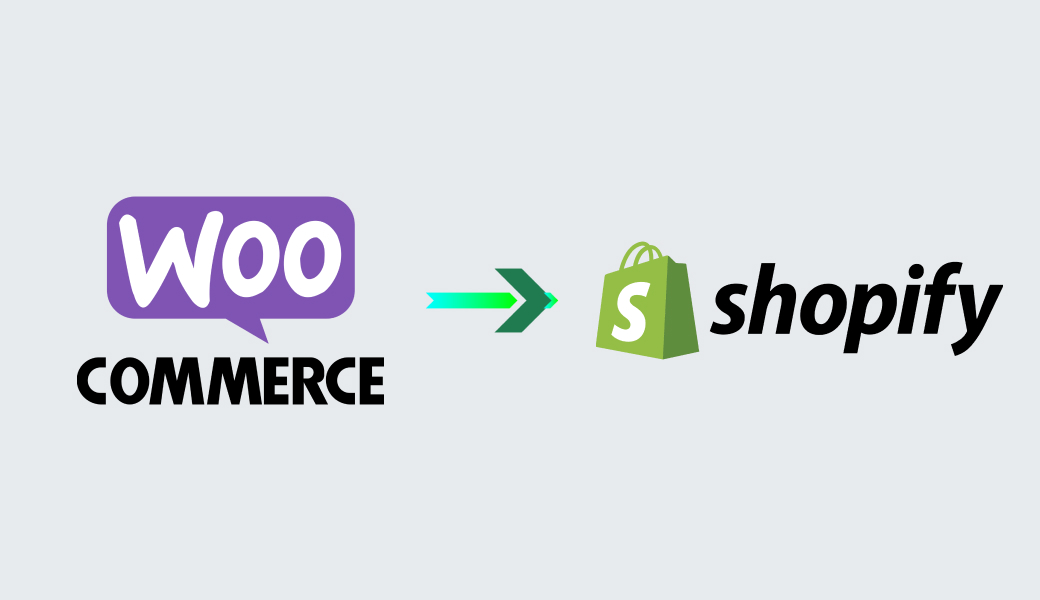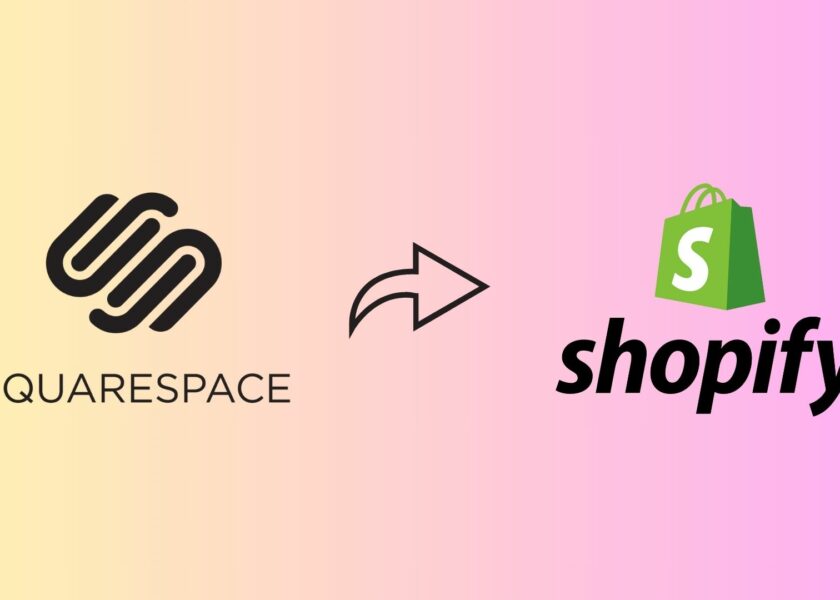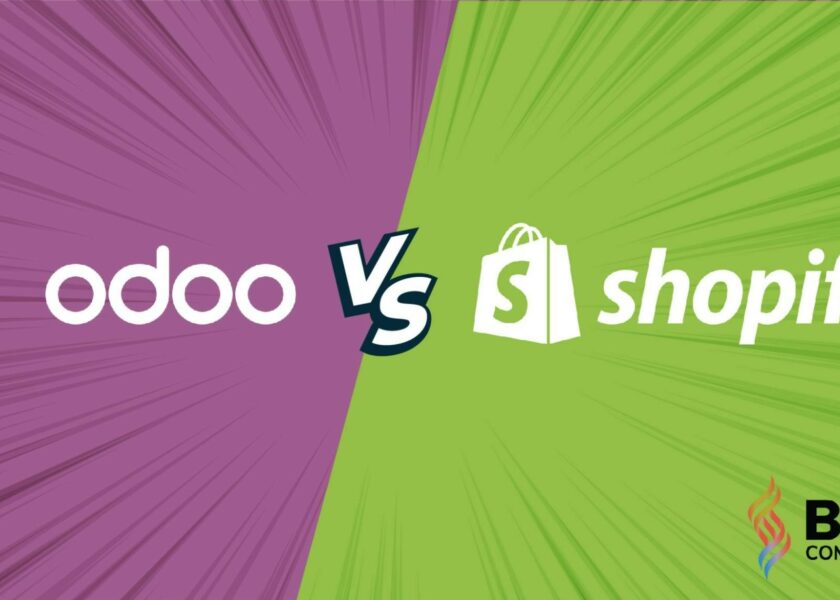How to Migrate WooCommerce to Shopify: Step-by-Step Instructions

The growth of eCommerce is undeniable, and with the advancement of technology and international integration, running an eCommerce store has become easier for owners. If you are a WooCommerce business owner and want to enhance your online store, Shopify is a highly recommended option that offers additional beneficial features.
Switching between platforms can bring numerous advantages, so don’t hesitate to consider migrating your orders, products, customers, and other data from your WooCommerce Store to Shopify.
In the article below, BSS Commerce Shopify will provide you with a straightforward step-by-step guide on how to successfully migrate WooCommerce to Shopify, as well as useful tips to fix common errors when switching from WooCommerce to Shopify.
Contents
Why Should You Migrate WooCommerce to Shopify?
WooCommerce and Shopify stand out as two of the most widely used eCommerce platforms. These platforms offer user-friendly interfaces, and a plethora of features, and have gained the trust of millions of online shoppers. Here are some reasons why you should migrate from WooCommerce to Shopify to operate your online business the best.

1. More Reliable: Since WooCommerce is a self-hosted platform, you are in charge of maintaining the security and uptime of your store. Shopify is a fantastic option if you wish to hand over this duty. This is also one of the main causes of individuals switching from Weebly to Shopify or from PrestaShop to Shopify.
2. Shopify Is Easier To Use: If you are struggling with the complexity of WooCommerce and find it difficult to use, consider opting for Shopify instead. Shopify is specifically designed to be user-friendly and offers a much simpler setup and management process compared to WooCommerce.
3. Better Security: Shopify is a hosted platform that enjoys the advantages of enterprise-grade security, and encompasses various measures such as automated backups and adherence to PCI compliance. Enterprise-grade security refers to the security measures implemented to safeguard extensive businesses against data breaches. PCI compliance, also known as Payment Card Industry compliance, is an essential requirement for any eCommerce store that accepts credit card payments. It ensures that you can process payments without concerns about your customers’ data security.
4. Faster: In the realm of eCommerce, speed plays a pivotal role, as it directly impacts the conversion rate. Shopify is specifically designed to excel in this aspect. Shopify ensures seamless performance even when confronted with too many influxes of visitors.
5. More Features: When it comes to features, Shopify may be superior to WooCommerce. It includes all the essential elements required to operate a thriving online store, such as integrated blogging, recovering abandoned carts, and multilingual support.
6. Scalable: As the business grows, scaling an online store is an undeniable element. The Shopify platform simplifies this process, while WooCommerce may encounter some challenges when attempting to scale up.
To know more about the difference between WooCommerce and Shopify and Shopify Plus, check it out: Shopify Plus vs WooCommerce
Factors to Consider Before Woocommerce to Shopify Migration
To migrate Woocommerce to Shopify, there are several factors that you should consider, including:
Backing Up Your Data
You need to make sure that all of your data, such as products, customers, orders, and any other valuable information, is backed up. There are multiple methods to accomplish this, but the simplest approach is to utilize a plugin like BackupBuddy or UpdraftPlus. These plugins will generate a backup of your website and store it either on your computer or in the cloud.
Once you have successfully created a backup, you can have peace of mind knowing that, in the event of any issues during the transfer process, you will be able to restore your data effortlessly.
Prepare Your Shopify Store
After completing the data backup and conducting a thorough data audit, the next step is to get your Shopify store ready. This involves setting up your account, selecting a suitable theme, and installing some necessary apps.
#1 Setting Up Your Account
To begin, the first step is to establish a Shopify account. Follow these instructions:
1. Go to the Shopify homepage
2. Select the “Start free trial” button.
3. Provide your email address, password, and your store name.
4. Select your language, currency, and region.
5. Click the “Create your store now” option.
6. You will then be directed to your Shopify admin panel, where you can commence the setup process for your store.
While you will be prompted to answer a few initial questions, feel free to skip them if you prefer. Your store name is not a concern at this stage, as you can always modify it later by linking your Shopify store to your existing WooCommerce domain name.
NOTE: Shopify only allows free trials for 3 days, so after completing the trial time, you can open premium Shopify plans.
#2 Picking a Theme
Selecting a theme for your store is the next step you must take. You can discover paid or free Shopify themes that meet your demands thanks to the wide options available.
Discover now: Best Shopify Themes Collection For Each Store Model
1. Access your Shopify Admin.
2. Navigate to the “Online Store” section.
3. Click on “Themes”.
4. Explore the available themes and find the one that appeals to you.
5. Once you’ve found a suitable theme, click on the “Install theme” button.
It is advisable to choose a Shopify theme that aligns with the design of your current WooCommerce website to maintain consistency. The Eurus Shopify theme is a great option to cater to all the crucial needs of a professional online store.

Also, Eurus theme is highly recommended by customers, with 95% positive reviews thanks to its rich features, easy integration, and design to serve the stores to boost performance and speed.
#3 Installing Necessary Apps
After successfully setting up your Shopify account and selecting a theme, enhance your store’s functionality by installing various apps. The Shopify app store offers a wide range of apps, including plugins, tools, and more, to cater to your specific needs.
To explore and discover these apps, navigate to the “Apps” section in your Shopify admin panel. Take your time to browse through the extensive collection of available apps. Once you find an app that aligns with your requirements, simply click on the “Install app” button. Shopify will then seamlessly install the chosen app onto your store, allowing you to utilize its features immediately.
Check out: Best Apps on Shopify For Unlocking Success
How to Migrate WooCommerce to Shopify: The Complete Guide
There are several methods available for importing products from WooCommerce to Shopify, including manually and using the Cart2Cart app. Here are detailed guides for each way.
Way 1. Migrate WooCommerce to Shopify Manually
In the section below, BSS Commerce Shopify will provide the option to manually migrate WooCommerce to Shopify. Although it can take a while to use this method, However, this is a convenient way to make sure that you can transfer total data from WooCommerce to Shopify which does not incur any fees. Please refer to the steps below.
Data needs to be prepared to migrate
You need to adequately prepare before transitioning between the two platforms. During this process, determine the type of data that will be transferred to Shopify. The following data is necessary for a successful migration:
- Products: This includes information such as the manufacturer, status, name, SKU, full description, product tags, meta title, store management, and additional images.
- Variants: These are unique variations of products, and their data includes price, weight, SKU, and quantity.
- Product categories: This category data consists of an image, meta description, meta title, description, and name.
- Customers: The required customer data includes their first name, last name, and email address.
- Shipping address: This data includes the address, company name, state, city, zip code, and country.
- Billing address: The billing address data includes the zip code, country, state, city, company name, address, first name, and last name.
- Orders: This data includes information such as shipping price, discount price, order comments, tax price, product price, quantity, options, SKU, and name.
- Additional data: Other important data that should be considered for migration include coupons, reviews, CMS pages, and blogs.
Step 1. Set up your brand new Shopify store
If you haven’t created a Shopify store yet, take the opportunity to do so now. The process of signing up for a Shopify account is incredibly straightforward.
1. Go to the official website at https://www.shopify.com/
2. Click on the “Start free trial” button.
Step 2. Export all the data from WooCommerce
Proceed to the next step by exporting the data from your WooCommerce platform. This data encompasses your products, orders, and customers.
1. To accomplish this, access the “Admin Panel” on your WordPress site and navigate to the “Products” section. A new window will appear, allowing you to choose the product type, specific categories, or columns for filtering before exporting.

2. If you want to switch the data, leave these fields empty. In addition, you have the option to include custom data for export in a selected field. And finally, click on the “Generate CSV” button to initiate the download of the file.

Step 3. Import the WooCommerce Data to Shopify
1. To accomplish this, go to the “Products” tab and locate the “Import” button. Refer to the screenshot below for assistance to import products from WooCommerce to Shopify.

2. Afterwards, the popup “Import products by CSV” will open. Click “Add file” and then “Upload and review.”

3. After clicking the “Upload and Preview” button, you can preview your first product, like the demo image below.

4. The CSV file in question is the one you obtained from WooCommerce. Once you have finished the import, the Shopify Importer will begin adding the products from this file to your online store. Please note that this process may take some time to complete. Once the import process is finished, you will be able to view the listed products on your Shopify store.
Step 4. Check and Update The Data You Imported
Once your data has been imported, it is crucial to thoroughly review and make necessary updates. This step is essential to ensure the smooth functioning of your new Shopify store.
1. Access the admin section of Shopify and navigate to the “Products” tab.
2. Select a specific product that requires editing.

3. Make the necessary updates to the product information and click on the “Save” button.
4. Repeat this process for all of your products, ensuring each one is reviewed and updated accordingly.
Congratulations! You successfully migrated from WooCommerce to Shopify.
Don’t forget to learn how to migrate from other platforms to Shopify via our articles below:
- Wix to Shopify
- Squarespace to Shopify
- WordPress to Shopify
- Amazon to Shopify
- Moving from Magento to Shopify
Way 2. Using Data Migration App
In this guide, BSS Commerce Shopify will specifically concentrate on transferring WooCommerce to Shopify by utilizing Cart2Cart, an automated tool for data migration.
Step 1. Connect Your Shopping Carts
1. To begin migrating WooCommerce to Shopify, the first step is to establish a connection between your shopping carts.
2. Start by accessing the Source Cart Setup and click on the drop-down menu in the Source Cart field. This will display a list of eCommerce platforms, from which you should select WooCommerce.

3. Afterwards, download and install the Connection Bridge. This plugin serves as a communication facilitator between WooCommerce and Shopify.

4. Once the installation is complete, follow these steps:
- Unpack the downloaded file named connection_bridge.zip.
- Extract the folder labeled bridge2cart.
- Use an FTP client to import this folder to the root catalog of your WooCommerce store.
- Confirm that a link to your Source cart has been successfully established.
5. Next, you will need to set up your Shopify cart.
6. Access the Target Cart Setup and click on the drop-down menu in the Target Cart field. From the list of eCommerce platforms, select Shopify.

7. Click on the button labeled Install Plugin to download the Migration for Shopify integration. Once the download is complete, proceed with the installation to enable the connection between your Shopify store and WooCommerce.
Step 2. Select Data for Migration
Firstly, you will need to select the data entities that you wish to transfer when transitioning from WooCommerce to Shopify. Simply click on “Select Entities” to designate the data classes you want to migrate. You have the option to either select all entities for a complete migration or manually check the individual classes to transfer specific entities.

When using Cart2Cart to switch from WooCommerce to Shopify, you can migrate various data classes including:
- Product data, such as name, images, description, and price.
- Product visuals, such as size, shape, and color.
- Integrations.
- List of purchased items, price, and payment information.
- SEO settings and page redirects.
- Static site pages, such as About Us, Contact Us, and more.
Step 3. Specify Additional Migration Options
In the third phase, you will need to select particular migration options that you may wish to incorporate. A few examples of these options are:
- Transferring your WooCommerce categories to Shopify’s Automated Collections.
- Establishing 301 redirects within Shopify to ensure the continued functionality of previous category URLs.
- Preserving migration SEO URLs and their corresponding link structure to safeguard your online store’s ranking on Google.

Step 4. Map Customer Groups and Order Statuses
In order to successfully migrate your customer classes and order statuses from your old WooCommerce store to your new Shopify website, you will need to manually map them. Unfortunately, this mapping process is not automated during the migration. Here’s what you need to do:
- Open Cart2Cart’s Stores Mapping window and choose the data groups in WooCommerce that you want to map onto your new Shopify store.
- Select the corresponding groups in your newly created Shopify site.
- If you cannot find the required groups in the target store, you can create them by clicking on the relevant buttons.

Keep in mind that when transferring your existing customers from WooCommerce to Shopify, Cart2Cart will automatically generate default email addresses for them if they do not have valid ones at the time of transfer. This typically occurs when guest users who have not registered on your site place orders.
Step 5. Run a Free Demo or Launch a Full Migration
The final step in the migration process is to launch the actual migration. You have two options: you can either run the free demo to familiarize yourself with how the Cart2Cart tool works, or you can directly launch the Full Migration if you are on a paid plan.
If you choose to run the free demo, please keep in mind that only a limited number of entities will be transferred. It is important to keep the browser window open until the process is completed.
To make sure that the migration process has been successful, you can check if the newly migrated data is visible on the frontend of your Shopify store. If you cannot see the migrated data, you can check the backend for the results. Here’s how:
- Go to the Demo Results page.
- Download the file labeled “Product IDs”.
- Compare the Product IDs in the downloaded file with the newly migrated entries on the backend of your Shopify store.
After successfully migrating WooCommerce to Shopify, The crucial step is to check and fix common errors carefully and accurately. Below are all things you need to know.
How to Fix Common Errors When Transfer WooCommerce to Shopify
Having trouble migrating products from Woocommerce to Shopify is one of the problems you cannot avoid. To help you limit these errors, BSS Commerce Shopify will provide some common errors along with good tips to fix them:
Having Issues With Importing Products And Customers
This issue typically occurs when there is invalid data in your WooCommerce CSV file. To resolve this, you will need to manually add the products and customers that are missing from your Shopify store.
Here’s how you can do it:
1. Go to your Shopify admin and select the Products section.
2. Click on “Add product”.
3. Provide the necessary information for the product and click “Save”.

Repeat these steps for each product that failed to import.
Next, you will need to add the missing customers:
1. Navigate to your Shopify admin’s Customers section.
2. Click on “Create customer”.
3. Enter the required customer information and click “Save”.
Repeat these steps for each customer that failed to import.
Importing Bundled Products Encountered Errors
Bundled products refer to products that are sold as a package, combining multiple items together. For instance, a bundled product could consist of a shirt and pants that are sold together.
However, if you have bundled products in WooCommerce and you want to import them into Shopify, you may encounter issues. To resolve this problem, you will need to manually create the bundled products in Shopify.
Here’s how you can do it:
1. Go to the Shopify App Store and install a product bundle app.
2. Follow the instructions provided by the app to create your bundled products.
3. Once you have successfully installed a product bundle app, you can utilize its features to easily create your bundled products.
Products Were Successfully Imported But Not Published
If your products have been imported successfully but are not visible to customers, it is likely because they were imported as hidden products.
To resolve this issue, you will need to manually publish the products:
1. Go to your Shopify admin and select Products.
2. Choose the specific product that needs to be edited.
3. Under the Visibility section, select “Show” for the Search engine listing preview.

4. To save the modifications, click the Save button.
5. Repeat this process for each product that has not been published.
Importing Product Variants Was Unsuccessful
If the import of your product variants was unsuccessful, it is probably because they were imported as separate products instead of being recognized as variants. To resolve this issue, you will need to manually create the variants by following these steps:
1. Access the admin section of your Shopify store and navigate to the Products page.
2. Select the specific product that needs editing.
3. Within the Variants section, click on the option to Add variant.

4. Enter the necessary information for each variant and save the changes.
5. Repeat this process for every variant that failed to import correctly.
In addition, if you are limited by the ability to customize and add capability variants for Shopify stores, Product Variant Options by BSS Commerce can be a great option worth considering to improve these limitations.
This comprehensive customization solution is designed to facilitate the growth for online businesses. With this extension, businesses can offer their customers unlimited product options for customizing their purchases. Customers have a variety of methods at their disposal to communicate their product preferences to the merchants’ websites, include dropdown menus, checkboxes, radio buttons, color swatches, uploads, textboxes, number fields, and many other features.
The Imported Products Do Not Have Any Dimensions
If the dimensions of your imported products are missing, it is probable that they were not included in the WooCommerce CSV file.
To include dimensions for your products:
1. Access Shopify admin and navigate to the Products section.
2. Select the product you want to edit.
3. Scroll down to the Dimensions section.

4. Enter the appropriate dimensions for the product.
5. Click on the Save button to save the changes.
6. Repeat this process for all the products that do not have dimensions.
Digital Products Were Uploaded But Not Published
If you are selling digital products on WooCommerce and want to import them into Shopify, you may encounter an issue where some of the products are not published. To resolve this, you can utilize the Digital Downloads app available on Shopify’s app store.
After installing the app, follow these steps to publish your digital products:
1. Access Shopify admin panel and navigate to the Products section.
2. Select the product you wish to edit.
3. Locate the Digital downloads section and click on “Add a digital attachment”.

4. Enter the necessary information for your digital product and click on “Save”.
Migrate WooCommerce to Shopify – Wrapping Up
To sum up, WooCommerce and Shopify are both excellent online platforms that cater to the needs and demands of your online store. While WooCommerce offers a versatile DIY tool that is highly regarded by tech-savvy users, Shopify is ideal for those who prioritize their store’s aspects without the need for technical expertise. Therefore, if you desire optimal business outcomes, it is advisable to swiftly migrate to Shopify without any hesitation.
It can be claimed that migrate WooCommerce to Shopify may not be as challenging as you think. By only following the guidelines provided by BSS Commerce Shopify in this article, you can smoothly migrate your store with minimal interruptions.
However, before proceeding with the transfer, consider a few factors to ensure that you are making the correct choice. This involves evaluating your current sales, familiarizing yourself with the Shopify platform, and understanding the limitations of both Shopify and WooCommerce. Once you have determined that this is the right path for you, switching from WooCommerce to Shopify is easier.
If you need help from a technical expert to migrate WooCommerce to Shopify, contact BSS Commerce Shopify with the Shopify Migration Services.

📌 Discover Shopify setups to help you manage your store and boost sales:
- Shopify Speed Score
- Shopify Automatic Discounts
- Mastering Shopify Inventory Management
- Best Shopify Review Apps Worth Trying
- Shopify Product Variants
- Pre-Orders on Shopify
- Shopify Countdown Timer
- Shopify Invoice Generator
- Shopify Abandoned Cart Email




